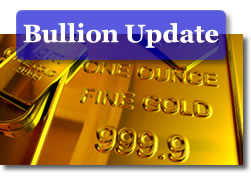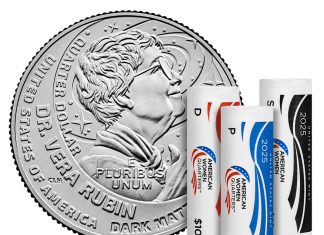 Good Morning,
Good Morning,
Crisis-oriented mentality remains pervasive on this last day of August and it will be interesting to see how the gloomy emotional state of global investors will reflect in the markets when full participation resumes in them in about one week’s time following summer’s holidays.
More of the same was on tap during the overnight hours; more widespread nervousness regarding the global economic recovery, more gains in the gravity-defying yen, more weakness in crude oil prices, more declines in global equity markets, and more steadiness in gold. Albeit the yellow metal touched lows near $1,231.00 per ounce, it remained fairly well bid while speculative buyers duked it out with would-be physical buyers in India.
The latter turned away from buying the precious metal for the moment, as the perception that gold prices are too high and that they might correct soon dented festival-related shopping enthusiasm. Gold priced in rupees remains but one percent below its all-time highs. Meanwhile, cheaper gold than that which is imported was making its way onto India’s shopkeepers’ shelves as consumers are once again turning the spigots of scrap flow open a few more notches at current values.
The country’s denizens are thought to have a larger than 20,000 tonne gold stash; part of it at least, could be mobilized when owners decide the price is ‘right.’ The World Gold Council recently reported a 35% surge in scrap gold supplies as having taken place in the second quarter — coincidental with gold’s setting a fresh record during the Eurodebt crisis.
Precious metals opened to the downside in New York this morning, ahead of US consumer sentiment, car sales, and home price data; all of which were expected to underscore the slowing in the US economy recently acknowledged by the Fed with its ‘whatever it takes’ jawboning. Adding to the modest selling pressure at the open, the fact that a wide range of different assets was seen as being sold by global investors in the quest for cash following hefty equity market declines. The Dow was barely hanging on to the 10K level as of Monday while the Nikkei average shed 325 point overnight, free-falling to the 8824.00 level.
Eurozone inflation cooled this month, with results showing a 1.6% pace in price gains; still well below the ECB’s targeted two percent level. At the core of the falling number is the absence of wage pressures in the region, as the local economies are beset with high joblessness levels (like 10% for the fifth month in a row, with nearly 16 million people out of work). Over in Japan, talk (but nothing more) continued regarding intervention in the currency markets to halt the yen’s seemingly unstoppable rise. To be continued. The ‘talking about it’ part, anyway.
Gold started Tuesday’s session with yet another marginal drop in spot prices, down $1.20 to $1,235.20 per troy ounce. Silver fell 8 cents to open at $18.96 but more substantial declines were recorded in the noble metals complex.
Crude oil’s near $1 drop in the wake of soft stock index futures did not help matters much, either. We still look for fund activity to try to push gold values higher prior to month’s end (i.e. closing time tonight). Regardless, August could still finish with a better than 4% showing in the metal following intense attention from funds.
Uniformly bullish prognostications remain as abundant as a fall wheat harvest. Current "we will see" targets are clustered around $1,400 and $1,500 per ounce with the $1,280-$1,320 zone not even worth mentioning as a waypoint or rest stop. A few technicians might hold a — diverging opinion on the matter, however.
One of Kitco’s ‘classics’ — chartist Merv Burak — notes in his weekly take on matters technical (issued yesterday) that gold is exhibiting a negative divergence. Basically, he argues, gold’s ascent to new highs in June was not corroborated by corresponding highs in momentum. Momentum has in fact waned after having peaked almost a year ago when the $1226.00 pinnacle was etched into the record books in gold.
Such partings of the ways are not necessarily a flag for the end of the bull run, but rather, a ‘caution ahead’ signal. On the Elliott Wave side, analysts only see a negation of the current wave pattern underway if and when the $1,265.00 June peak is taken out on the charts. At this juncture, we are $20 short of that target, but someone is apparently gunning hard for it, still. First things first; $1,250.00 resistance is the next closing mile marker to have to pass by.
Platinum shed $12 from Monday’s closing values, dropping to $1,511.00 the ounce, while palladium slipped a more by a more-modest-but-still-largest-in-percentage-terms $4 (0.81%) to start at $489.00 per troy ounce. Automobile sales data in the US for the month that is drawing to a close tonight is expected to be quite disappointing, when it is released tomorrow.
The numbers might in fact turn out to reflect to slowest August at car dealers’ lots in some 28 years. Annualized car sales could have fallen to under the 12 million unit level, about 2.6 million shy of last year’s sales pace. Noble metals staged recent rallies mainly on the back of spec fund and ETF oriented demand and observers opine that it will still take a near-full revival in US and western European auto sales levels to better underpin the values in the pgm (platinum-group metals) complex. The only steady metal remained rhodium, which did not budge from Monday’s $2,080.00 bid closing quote.
Closing out today’s roundup, a fresh take on matters Chinese. Marketwatch’s Andy Xie, pulls out the magnifying glass and discovers that China’s phenomenal growth may in fact contain the seeds of some no-so-pleasant unwinds in the making. Andy’s article focuses on the chicken-egg conundrum between Chinese growth and US dollar weakness but contains one globally valid insight we thought we would mention here as it is as time-tested as can be, and as predictable as a Shinkansen train’s arrival at Tokyo Station. Or, make that the Maglev train’s arrival at Pudong airport:
"A crisis always seems to follow a period of high growth in emerging economies. People tend to blame the crisis on slow growth. It actually gets the causality wrong. The problems that are allowed to accumulate during the high growth period cause both the slow growth and crisis. Nothing hides problems like high growth. Hence, there is a tendency among policy makers to prolong high growth as long as possible, hoping to grow out of all the problems.
The problems that China’s economy faces today and the policy recommendations that many recommend bear resemblance to what had been observed during high growth in other emerging economies. History teaches us that one couldn’t grow out of all the problems. The longer the growth lasts, the more intractable the problems are. Trying to grow out of one’s problems inevitably leads to monetary excess.
The weak dollar makes monetary excess supportable in the short term, as the external pressure restricting money printing is weak. It leads to bubbles. The asset appreciation then becomes the source of profit that justifies investment. A collapse is inevitable."
Jon Nadler
Senior Analyst
Kitco Metals Inc.
North America
Blog: http://www.kitco.com/ind/index.html#nadler
Original article link: Miracle-Gro: The Universal Solution?
Editor’s Note: Meet the Kitco Team at the upcoming Kitco Metals eConference September 12-13, 2010. A not-to-be missed event featuring Ron Paul, Marc Faber and other industry heavyweights. The eConference is free with Pre- Registration www.kitcoeconf.com.










